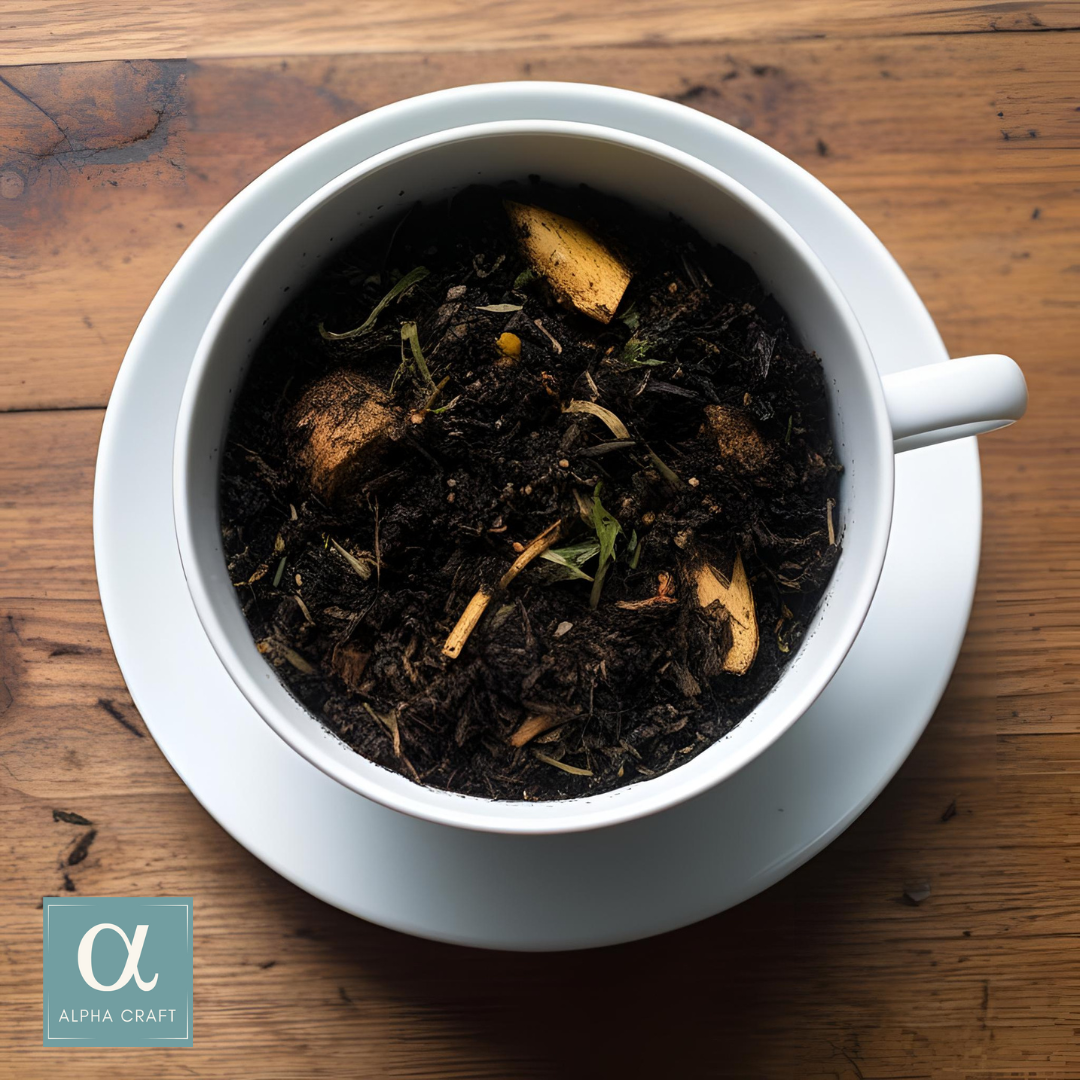Compost Tea
Compost tea adds beneficial bacteria to your garden bed. This increase in microbial activity will improve soil health and plant growth. It's simple, organic, and easy to brew!

Inventory
Some of the links in this post are affiliate links, and we may receive a commission if you purchase through them.
Tools & Equipment
- Trowel
- Measuring Cup
- Ruler
- Scissors
- 5-Gallon Bucket
- Air stone, airline tubing and check valves, optional
- Air pump, optional
- Cheesecloth
- Twine
- Foliar Spray Bottle, optional
Ingredients
- 2 cups Finished Compost
- About 5 gallons, Unchlorinated Water (filtered) or rainwater
- 1 tbsp Unsulfured Molasses, optional - to boost beneficial bacteria if needed
Instructions
Make the Tea Bag
Measure and cut a 12" x 12" piece of cheesecloth. Lay the cloth on the ground, and put compost in the center. Gather the corners at the top and tie closed with twine. Make sure there aren't any openings for compost to escape.
Brew the Tea
Fill a 5-gallon bucket with unchlorinated water (or rainwater) and place the compost tea bag in it. Make sure it's completely submerged.
Aerate the Tea
Return to the compost tea a few times each day to stir it. If you choose to automate this process, attach an airstone to an air pump with airline tubing and turn on the pump.
It's essential to keep the tea aerated so it doesn't become anaerobic and form harmful bacteria and potentially contaminate your plants. Anaerobic tea will smell like sewage or rotten eggs. It can also be dark and cloudy in appearance.
Harvest the Tea
After the tea has steeped for 24 - 36 hours, remove the bag from the 5-gallon bucket. Pour the tea as a soil drench directly into the soil around the base of plants or as a foliar spray applied directly to the leaves of plants with a spray bottle.
If you put your tea in a bottle, be sure to strain it through a fine mesh material before use. Use within 4-6 hours of completion.
Modifications
Make a Bacteria Dominant Tea
Bacteria-dominant tea is best for fast-growing, nutrient-hungry plants and soils that need quick nutrient cycling. Bacteria rapidly break down organic matter, making plants' nitrogen and other essential nutrients available. This type of tea helps maintain healthy, active soil in annual gardens where frequent planting and harvesting occur.
Where to use: vegetable gardens, lawns, annual flowers and herbs, or soils that have been tilled, disturbed, or compacted.
When to Use: during planting to boost seedling growth, during the growing season to maintain microbial balance, and after heavy rains to restore beneficial bacteria.
What to Add:
Unsulfured Molasses, 1 -2 tbsp | feeds bacteria
Liquid Kelp, 1 tsp | provides trace minerals
Fish Hydrolysate, 1/2 - 1 tsp | adds nitrogen, but keep low to avoid fungal overgrowth. Optional.
Humic Acid, 1/2 tsp | helps nutrient availability. Optional.
Make a Fungal Dominant Tea
Fungal-dominant tea is ideal for perennials, woody plants, and trees, where slow, steady nutrient release is needed. Fungi help break down more complex organic materials like wood, mulch, and fallen leaves, creating a nutrient-rich, stable soil. This type of tea is also excellent for improving soil structure and enhancing root connections with mycorrhizal fungi.
Where to use: fruit and nut trees, shrubs and hedges, perennials and ornamental flowers, forested and undisturbed soils, and compost-rich garden beds that need long-term nutrient cycling.
When to use: early in the growing season to establish a strong root system, after transplanting trees and shrubs to improve root-fungi interaction in areas with sandy or nutrient-depleted soils.
What to Add:
Liquid Kelp, 1 tbsp | Supports fungal growth
Fish Hydrolysate, 1 tbsp | Provides proteins that fungi break down for nutrients
Oat Flour, Rice Bran, or Ground Oats, 1 tbsp | Feeds fungal populations, encouraging mycelial growth
Humic Acid, ½ tsp | Helps fungi access and retain nutrients. Optional.
Make a Balanced Tea
Balanced compost tea combines bacteria and fungi, making it a great general-purpose soil enhancer. It works well in diverse gardens with a mix of annuals, perennials, and shrubs, helping create a stable and resilient soil ecosystem. Balanced tea is ideal for regular maintenance and for gardeners who want an all-around improvement in soil health.
Where to use: mixed gardens (flowers, veggies, shrubs, and trees together), container gardens and raised beds, restoring depleted or overworked soils, and general soil improvement for long-term health.
When to use: at the start of the season to prepare soil for planting, every 2-4 weeks as a general health booster, after stressful weather events like drought, extreme heat, or heavy rain.
What to Add:
Unsulfured Molasses (or cane sugar), 1 tbsp | Feeds bacteria without overpowering fungi
Liquid Kelp, 1 tbsp | Provides minerals and supports both microbes
Fish Hydrolysate, ½–1 tbsp | Encourages a mix of bacterial and fungal activity
Oat Flour, Rice Bran, or Ground Oats, ½ tbsp | Supports moderate fungal growth for balance
Humic Acid, ½ tsp | Enhances nutrient exchange for both microbes. Optional
Every craft begins as an alpha craft. Crafts are developed by considering the function and effect of inputs and all the actions needed to create the transformation. They are designed with theory and research but have not been personally tested by any Guild Craft Trade employee or member. When you perform a craft at this stage, it is through your own experimentation (and risk, if there is any).
This designation is part of our mission to build a chain of production for cottage industry. To learn more, see our About page.